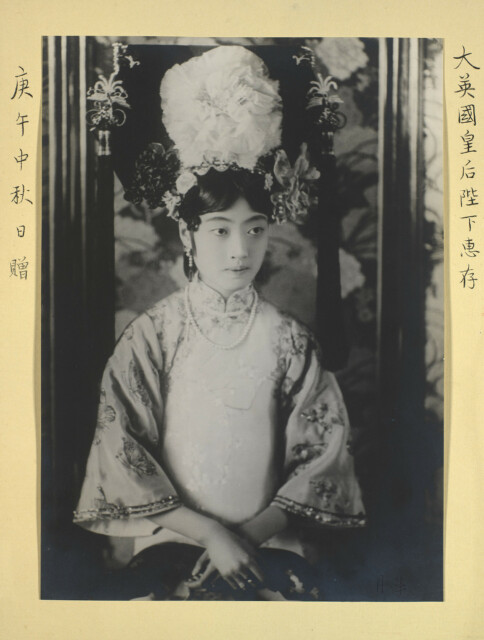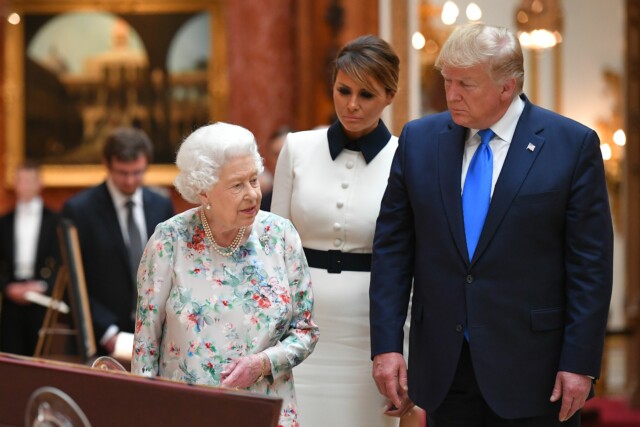
THE Queen’s enormous art collection is being “woke- tested” so as not to offend snowflakes.
Curators are reviewing pieces “relating to race, enslavement, empire and disability” amid increasing objections to the Royal Family’s past.
The Queen’s art collection is being ‘woke- tested’ so as not to offend snowflakes
The collection includes a portrait of Sir Thomas Picton – dubbed the Hero of Waterloo – which has had his links to the slave trade added to the description
Over the last year, more than 2,500 paintings, photographs and artworks — including displays in Buckingham Palace and Windsor Castle — have come under scrutiny.
Some which may potentially provoke outrage have since had their terminology changed or updated to bring them into line with modern “attitudes”.
A source said: “In many cases it is as simple as changing a caption to add names of those involved and to changing colonial place names to local ones.
“But it is definitely done with one eye on how attitudes have been changing in recent years.”
The Royal Collection Trust, which is undertaking the ongoing review, has not revealed exactly how many failed the woke test.
But they include a portrait of Sir Thomas Picton – dubbed the Hero of Waterloo – which has had his links to the slave trade added to the description.
The text for a 17th-century sketch by Italian artist Domenichino was also changed from “Epileptic Boy” to “boy with epilepsy”.
Up to 1,500 British Empire-themed photos from Edward Prince of Wales’ trip to India in 1921 have been updated to avoid causing offence, as have those from young King George V’s world tour on HMS Bacchante in 1881.
Meanwhile, curators added statements to explain more research is needed to identify people in photos, including a group of men in Singapore from 1901 and Tibetan guests at Calcutta Turf Club in 1905.
They also strived to name certain individuals, including the only known portrait of the Chinese Empress Wanrong (1906–46).
Other portraits that could potentially offend include former Home Secretary Henry Dundas, who delayed the abolition of slavery.
Former Prime Minister Sir Robert Peel, who was also anti-abolition, could come under the reviewers’ scrutiny, along with slave owner William Beckford.
The Queen has the largest private art collection in the world, spread across 13 royal residences.
Some of the million pieces managed by the RCT date back as far as Henry VIII more than 500 years ago. It is the first time that the trust has revealed carrying out a “woke check” on artwork.
In its annual review published this week, the RCT said: “Curators continued work to update terminology relating to race, enslavement, empire and disability, reviewing a total of 2,500 object records on the Collection Managements System over the year.”
The move comes after a statue of slave trader Edward Colston was toppled, defaced and dumped in Bristol harbour in June 2020.
That sparked calls for other slavery and colonial era statues to be removed from the streets.
There are also increasingly vocal demands from across the Commonwealth for the Royal Family to pay reparations for slavery.
Earlier this year Prince William and Kate’s tour to the Caribbean was blighted by protests, with parts branded “tone-deaf” with “heavy colonial undertones”.
In Jamaica, William expressed “profound sorrow” over the UK’s role in slavery, describing the trade as “abhorrent” and saying: “It should never have happened.”
 Prince William expressed ‘profound sorrow’ over the UK’s role in slavery
Prince William expressed ‘profound sorrow’ over the UK’s role in slavery
 The RCT said: ‘Curators continued work to update terminology relating to race, enslavement, empire and disability’
The RCT said: ‘Curators continued work to update terminology relating to race, enslavement, empire and disability’
Prince Charles also called it an “appalling atrocity” which “forever stains our histories”.
Meanwhile, Prince Harry and Meghan last year claimed an unnamed royal made racist comments about their unborn children.
The Royal Households has now begun to publish the percentage of staff from an ethnic minority. Buckingham Palace announced last year it had a 10 per cent diversity target by the end of 2022.
It currently stands at 9.6 per cent, with William and Kate’s office at 13.6 per cent, and Charles and Camilla at 10.6 per cent.
An RCT spokesman said: “Publicly available object records are continually under review in order to enhance the information presented on an object and/or subject.
“Reference to 2,500 object records being reviewed in 2021-22 was included in the Annual Report to demonstrate the scope of this curatorial work.”
 The Queen has the largest private art collection in the world
The Queen has the largest private art collection in the world







